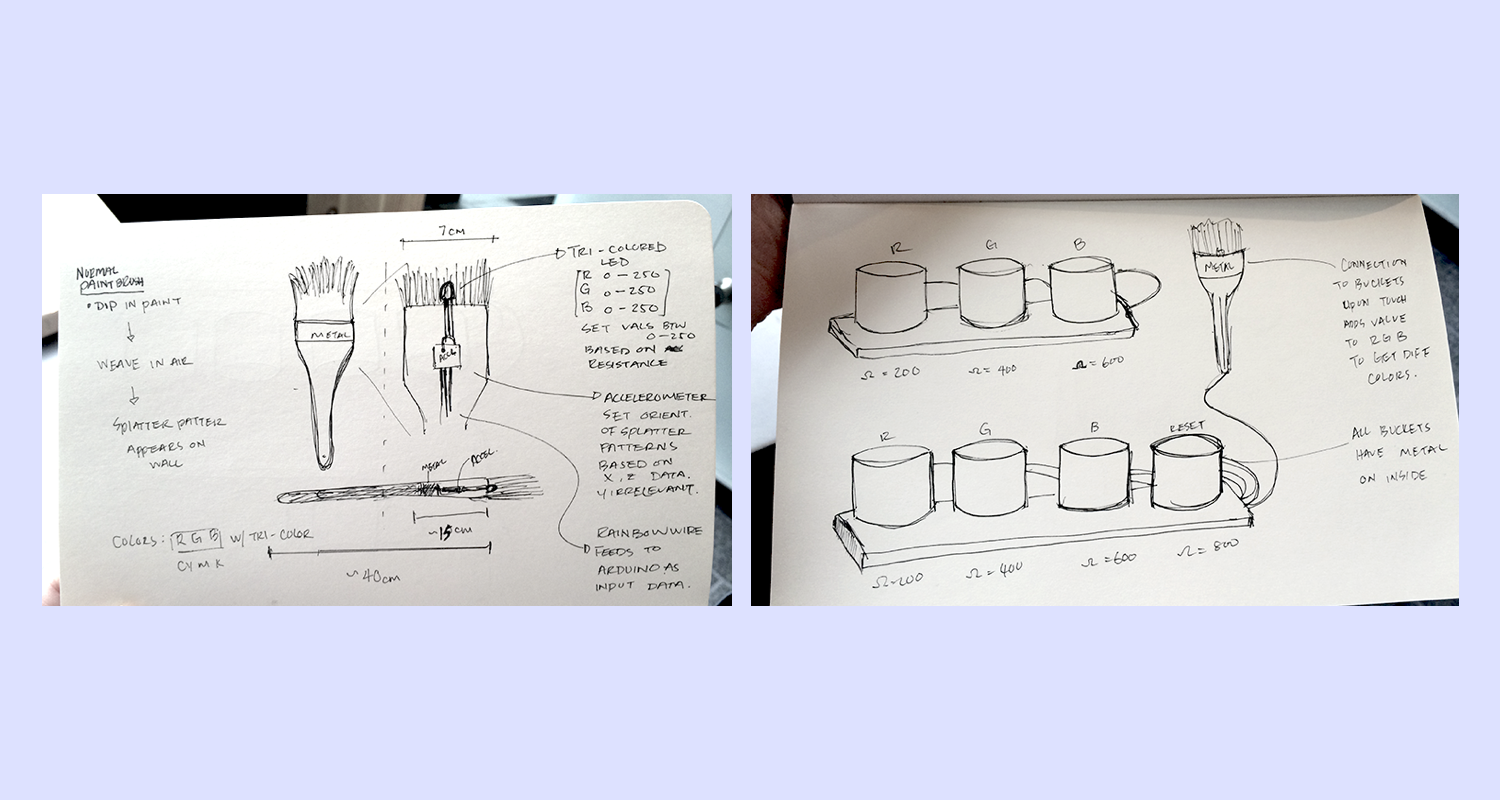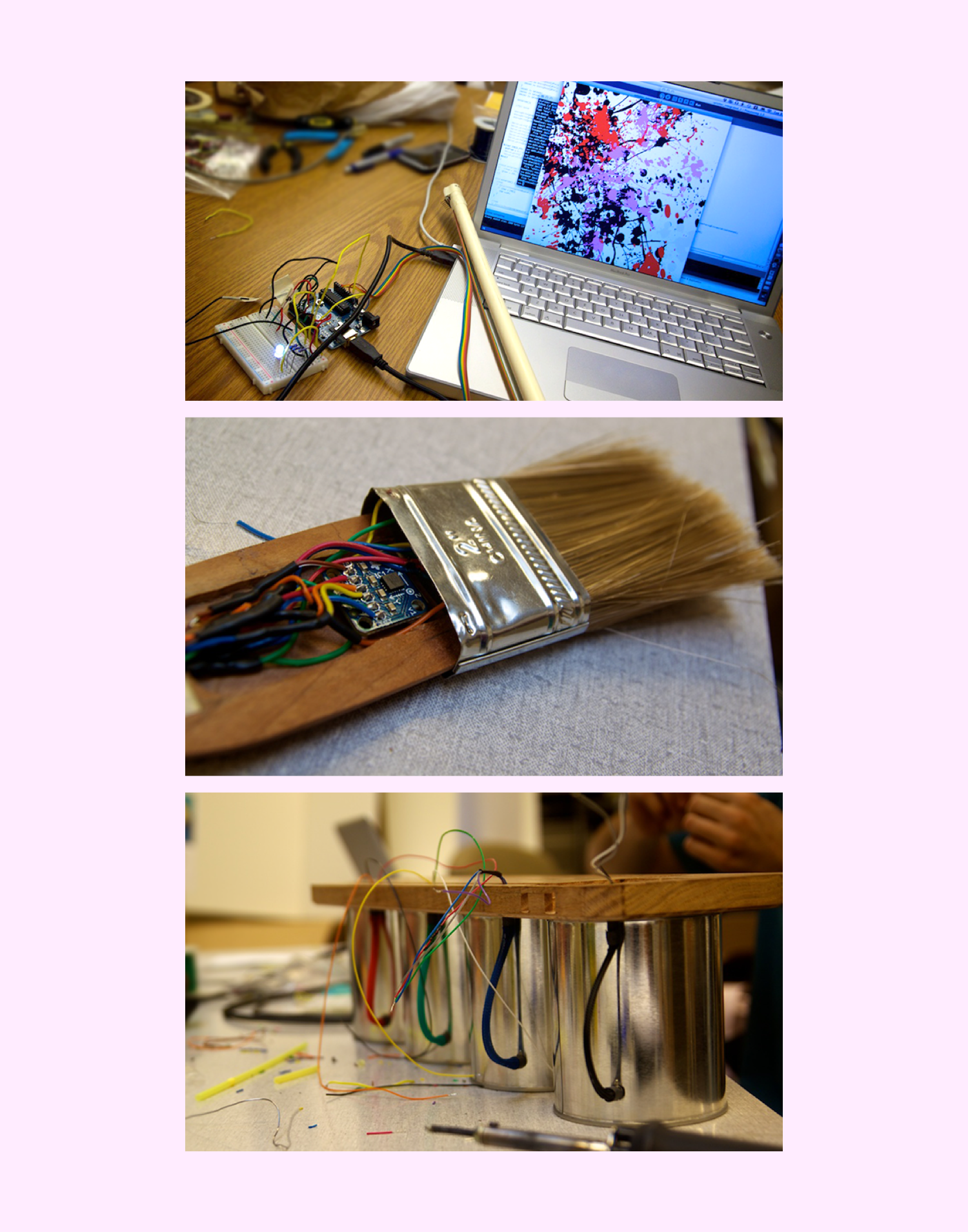
Note: Due to the loss of a hard drive, many high quality photos of the final product were lost. However, here is a short video demo.
For the final project of a class in my senior year in college, my group of three was asked to create an art installation. The only requirements were that we use the Arduino and for it to be an interface anyone can interact with. We had six weeks to complete the project.
My role was to lead the team in designing the user experience and interactions, and to plan out the details of project execution for an on-time delivery. I began by encouraging everyone to think big in an ideation session, which helped us formalize our project. Our goal was to create a toy which would give young children an unexpected, joyful experience.
 Some early sketches conceptualizing the idea.
Some early sketches conceptualizing the idea. In order to understand our primary users better, specifically their physical behaviors and mental models, I organized a few user studies in the local community which included observational visits to a day-care center, one-on-one interactions through play, and interviews with parents. I also did online research to better understand the market space. Learning about my users in these informal sessions to dive deep into the problem space helped me gain a better understanding of their behaviors, mental models, and goals, allowing me to design an engaging and rewarding interaction for the toy.
Given that there was no funding for the project and we had a relatively short time to complete it, I was determined to be resourceful about how we spend our time and money. I gathered excess materials from the architecture and EECS departments, and helped my group members repurpose discarded art and electrical supplies to create simple sensors out of existing materials into a digital paint brush with accompanying paint buckets.
 The digital paintbrush and buckets were repurposed from discarded art supplies.
The digital paintbrush and buckets were repurposed from discarded art supplies. The final artifact is a digital painting toy we titled “Splatter.” A user can interact with the toy by flinging the brush toward a projected screen; a digital splatter pattern will display on the screen. They can change the colors by “dipping” the brush into any of the buckets which supplied them with digital paint in red, green, and blue; they can mix colors by dipping the brush in multiple buckets. Splatter was applauded by everyone in the class for its craftmenship and creativity. One professor from the MIT Media Lab, who judged the final products, commented that it was a perfect marriage of the analogue and digital experiences, and is “unexpectedly delightful”. We were able to take our project into the community and allow our target users to play with it. The children were able to pick it up and intuitively understand its function, and found it engaging to play with for an extended period of time. Parents commented that it would be a useful tool helping their children learn about colors.
My group members and I were thrilled by the results because we were able to deliver a high quality product on time which exceeded expectations and served our users and their needs. We were also able to stay within the time and budget constraints by being resourceful and simplifying our ideas.
